You’ve tried a generative AI tool for copy and don’t find it useful? Or are you using ChatGPT or another generative AI assistant for email copy and satisfied with the results? However, there's always room for improvement. In this post, we'll share ideas and methods recommended by email marketing and digital marketing professionals who use generative AI daily to enhance communication.
of email marketers prefer ChatGPT as a generative AI tool
Important to note:
Among email marketers worldwide, 55% prefer ChatGPT. Let's tailor our prompts for this powerful tool. We'll begin by revisiting the fundamentals of engineering prompts and then explore ways to further enhance your prompts for even better results.
Fundamentals of engineering prompts for generative AI
Previously, we shared the fundamental principles of engineering prompts — recommendations and tips for building effective prompts.
Allow me to recap them here briefly:
- Understand the subject.
- Know your goal.
- Give the AI clear instructions.
- Get control over AI’s creativity.
- Test your prompts.
Now let’s proceed to the ways to improve your prompts, even when things are going well, to make it even better.
Ways to improve prompts for generating email copy
Now, we’ll start with the foundation for improving your communication with ChatGPT. Afterward, I'll share tips from professionals I contacted during my search for effective prompt engineering techniques. The professionals use it daily for tasks like brainstorming, copy validation, refining subject lines, and other advanced tasks.
Interesting fact:
While many people still associate ChatGPT primarily with content generation, it's a versatile tool that helps in idea generation and validation, translation, proofreading, and editing. It even functions as a robust search engine, aggregating information from various sources.
Lay the foundation for successful communication with ChatGPT
These are the fundamental steps to take when working with ChatGPT to ensure it accurately understands your requirements. Whether you are using this tool for idea generation or copy optimization, establishing this foundation should be your first priority, as it will also have a positive impact on how ChatGPT interprets your future prompts.
1. Set custom instructions
This is probably the first thing you should do when working with ChatGPT if you're using it for a single project.
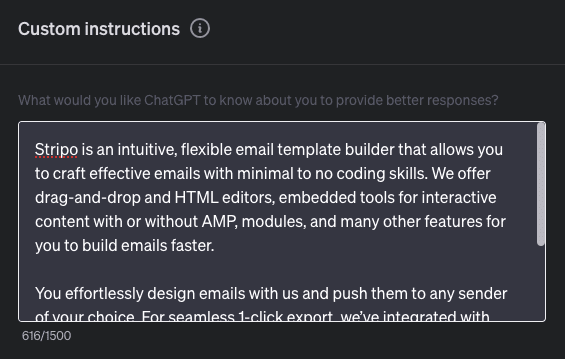
Custom instructions are vital as they enable you to provide specific context and product details. This ensures the generated content is accurate, relevant, and aligned with your brand or business, eliminating the need to set guidelines for each new chat.
Please note:
We don’t recommend setting custom instructions if you use ChatGPT for two or more projects because it will apply these settings to every response and topic it generates for you.
2. Get control over AI’s creativity
By specifying the level of creativity in your custom instructions, you can ensure that all the responses you get from ChatGPT align with your established standards. This allows you to maintain a consistent tone, style, and brand voice.
Sometimes, the purpose of the content can vary. In this case, you indicate your preferences in the prompts you provide to your generative AI tool during each session.
3. Leave feedback
As the quote above suggests, we should regard AI as a junior copywriter. Providing honest feedback to a junior copywriter is an effective way to help them improve so that the content meets your company's needs and expectations.

If you're dissatisfied with an answer, please provide comments explaining what you didn't like and suggesting potential improvements.
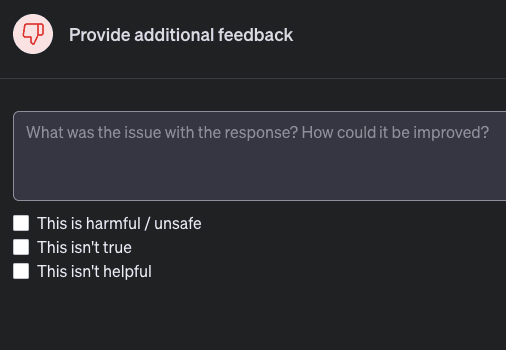
Of course, you should do that also when you like the output.
This applies to both newly generated and re-generated answers.
This simple approach helps convey your specific needs and expectations, guiding the AI to provide more suitable responses.
For instance, you can say:
“I have rated this text as follows:
- uniqueness 9/10;
- expertise 1/10;
- creativity 9/10.
And I need to be:
- uniqueness 10/10;
- expertise 8/10;
- creativity 6/10.”
You can, of course, establish your own specific criteria. Be sure to share them with ChatGPT.
4. Utilize unified enhancement
Treat your entire email content as a unified whole. Rather than requesting AI to validate or optimize individual parts like the intro, product descriptions, and headline separately, provide it with the entire email as one unit. This approach ensures consistency throughout the content of your emails.
To verify the effectiveness of this tip, we conducted an A/B test and discovered that this approach increases CTOR by 41.34%.
Please note:
This tip may not be suitable for users employing ChatGPT for writing articles, essays, or other extensive pieces of content. In such scenarios, it's necessary to divide your lengthy text into smaller segments. However, you can still define the terminology for AI to utilize in the text.
Ways to improve your prompts for generative AI when working on copy optimization
Here are some general tips that will help ChatGPT understand you better during copy optimization, editing, and validation tasks. I engage in these tasks daily, so I can say these tips have been tested and proven to be effective.
1. Ask it how it understands your prompts
Of course, ChatGPT or any other generative AI tool cannot truly understand you since it's not human. It won't respond with, “No, I don't understand your request.” However, it's crucial to inquire about how it interprets your prompts.
I often ask ChatGPT if it comprehends my instructions by saying, “What do you think I want you to do?” This approach has saved me time and prevented many “incorrect” answers.
2. Paraphrase your requests
If you're dissatisfied with the output, be ready to review and edit your prompt. Is it clear enough for you? If you find your prompt unclear and ambiguous, there's a good chance ChatGPT will, too.
3. Talk to AI
When utilizing generative AI for tasks such as validating email introductions, product descriptions, or anything else, you have the option to inquire why it believes that a particular piece of content will engage or interest recipients.
You can also ask it to explain how it interprets its own output. Sometimes, you might find yourself surprised by ChatGPT's interpretation of the output and the message it conveys.
Fun fact:
It tends to favor words and support ideas that align with your preferences. So, if you're looking for an unbiased answer, ensure your questions remain neutral. However, if you want additional reasons to support your viewpoint, ask directly.
4. Create a separate chat for a new topic
Creating new chats for new subjects enhances the quality of your interactions with ChatGPT, facilitating more productive communication.
Here are a few benefits:
- contextual focus: Clear context improves responses;
- improved responses: It generates responses based on the context provided in the chat;
- organization: New chats keep topics organized;
- efficiency: It addresses one aspect at a time.
Please note:
ChatGPT does not mention any limitations on the number of chats you can open. I have been using ChatGPT-4 since March and have over 70 chats, and I still have access to all of them.
5. Specify the tone of voice
Maintaining consistency in your email campaigns is vital, and the tone of voice plays a big part. Make sure always to explain what tone you want if you have not set it in “Custom instructions.”
Fun fact:
As many of you may know, Stripo’s integrated with ChatGPT to help email marketers optimize their email copy directly within the editor. We recently analyzed the most commonly requested tone of voice for text optimization by marketers. Can you guess what it is? It's formal. This particular tone is used ten times more frequently than any other tone.
Here are my favorite prompts:
I mostly use ChatGPT for content optimization rather than for generating new content. As a result, my prompts tend to be simple and concise. If more substantial assistance is required, such as document analysis or essay creation, you will need to craft way longer prompts, like 1-2 pages long.
- Please tell me how you understand this.
- What do you think is the main goal of the message?
- Is my message clear?
- Is my text logically structured well? Or should I move paragraph #3 before paragraph #5?
- Proofread my text.
- Which word sounds more natural for the US: X or Y?
- Help me make this text twice as short/keep it 20 words long.
- Which heading do you think will work better for the following piece of copy [my copy] : X or Y?
Ways to improve your prompts for copy validation and ideas generation
While the previous recommendations were mainly focused on copy improvement, these are dedicated to copy validation and generating new ideas with ChatGPT.
Interview Expert

6. Provide a detailed explanation of your needs
Generative AI can't grasp the details of your request unless you provide it with details. Avoid making it guess; instead, offer clear instructions. For instance, Galina specifies her audience's age in her prompts. This ensures the use of appropriate language and makes emails resonate with her readers.
7. Assign roles
Assigning roles, such as saying, "Imagine you're a travel agent," when requesting tasks helps ensure that the responses are clear, relevant, empathetic, and tailored for a specific profession or industry.
8. Clearly define your dos and don'ts
For optimal results, it's essential not only to instruct AI on what you want but also to specify what you don't want in the output.
9. Utilize follow-up prompts
Follow-up prompts are essential for effective communication with AI, especially when you use it for ideas generation and copy validation. They help maintain context, seek clarification, provide guidance, and contribute to the ongoing improvement of AI's responses.
Here are Galina’s favorite prompts:
- What are the most preferred airlines/the most popular season/etc. for Americans? (Here, Galina also adds the age and destination of my audience).
- Please rewrite my copy in a friendly tone of voice.
- Come up with a teasing/informative/etc. subject line for the email. (Be sure to paste your email copy).
- Please optimize my intro and avoid using the words, “Word 1” and “Word 2.”
- Which subject line will work better for a “Rate your recent trip with us” email? (Enter the subject lines AI needs to compare). And why?
Ways to improve communication with generative AI for more effective content analyses, summarization, and web search
ChatGPT not only can help you with copy generation and validation, it can also swiftly analyze vast amounts of data, offering nuanced insights and detailed summaries more efficiently than manual methods, saving you time and effort. With these tips, you’ll teach generative AI to do it more efficiently.
Interview Expert

10. Utilize plugins for link analysis
ChatGPT cannot read links directly. Therefore, to access information from open sources, we must use plugins, also known as link readers. How do these function? They analyze the content from sources such as PDF reports, webpages, or other non-password-protected materials.
You use them when you:
- need a summary of content from a specific source on a particular topic;
- need to compare two distinct resources, identifying commonalities and differences;
- are seeking new information, particularly for analyzing sources published after September 2021.
Be sure to provide it with the context, guidelines, or requirements.
11. Try out other generative AI tools
There are more tools available than just ChatGPT. While ChatGPT performs well, it's worth considering that, among other options, a different tool may better suit your needs.
Or you can even combine them if you like.
I personally like Llama 2 by Facebook and Claude 2 by Antropic, along with ChatGPT.
Here are Volodymyr’s favorite prompts:
In brackets, we specify the tools Volodymyr uses for a particular task.
- Please find some relevant studies or blog posts on
from the most trustworthy sources (Bing Chat or ChatGPT + Google Scholar plugin). - Please make a summary of this PDF/document/post (Claude 2).
- Please get me some ideas on how to improve ___ in marketing for ___ (ChatGPT/Llama2/Claude 2).
- Please analyze the results of the AB test and give me some insights based on this info along with (ChatGPT with Advanced data analysis mode).
Please remember: Not everything needs improvement
You may recall the saying, "If it ain't broke, don't fix it." Improving prompts without a clear purpose can be counterproductive. Therefore, it's worth considering whether some prompts should remain unchanged.
Cases when Volodymyr would recommend leaving the prompts the way they are:
- when you've achieved consistency in your content and are OK with the tone, style, or format produced by your current prompts;
- in cases where you have a well-established set of prompts that your AI assistant comprehends perfectly, and altering them could potentially introduce uncertainty or disrupt your workflow.
Understanding the limitations of generative AI
Generative AI is a powerful tool, but it's not omnipotent; it's merely a tool. There are limitations to consider when working with AI. Regardless of how you enhance the prompts, AI won't surpass its own capabilities. At least, not yet…
- It doesn’t have emotional understanding. AI does not have emotions, feelings, or empathy. It can discuss emotions but does not comprehend or experience them. Perhaps, yet;
- it lacks creativity. Sure, you can ask it to be creative, but its creativity will be based on patterns in existing data. Truly original and groundbreaking creative work is beyond its capabilities;
- fact-checking is required. AI is trained on information from the internet, so its response may not always be accurate. All the information and answers it provides should be verified from reliable sources for critical use;
- bias in data. For the same reason, it can inadvertently generate biased or controversial content, which may contain biased or prejudiced information;
- lack of up-to-date information. ChatGPT’s knowledge, for instance, is static and doesn't include information beyond September 2021;
- performance can vary depending on the language. Generally, it excels in English due to its extensive English training data, but it may perform slightly less accurately in less common languages. Nonetheless, it can offer valuable assistance in many languages;
- the token limit per interaction. The maximum token limit of ChatGPT-3.5 per interaction is 4,096, while the token limit of ChatGPT-4 varies between 8,000 and 32,000 tokens depending on the model. In English and many other languages, words and punctuation are separate tokens. In Japanese and Chinese, a single character can be a token. For longer conversations, you may need to truncate or shorten text to fit within this limit;
- security concerns. It's essential to be cautious when sharing sensitive information online, even with AI assistants. This is the piece of advice I received from GhatGPT, by the way; 🙂
- bad fit for some industries. Generative AI should not be used for medical, financial, legal, psychological sciences, or national security purposes, and it should not be used to compromise academic integrity.
It's crucial to use AI as a tool to assist and augment human capabilities while being aware of these limitations. Always exercise critical thinking and fact-checking when using information generated by AI, and consult expert sources for critical or sensitive decisions.
Wrapping up
Ways of improving your prompts depend on your specific request. We've covered the most popular ones:
- for copy optimization, validation, and generation;
- for ideas generation;
- for data analyses;
- and general steps to make your communication with generative AI tools even more productive.
To maximize the benefits of ChatGPT or any generative AI tool, being precise in your prompts and evaluating the outputs is crucial. It's essential to keep in mind that these tools have limitations that may not be overcome, at least for now.
And last but not least: We’ve all heard it probably a hundred times, but I want to say it again, “No matter what AI generates, we are responsible for the final result.”


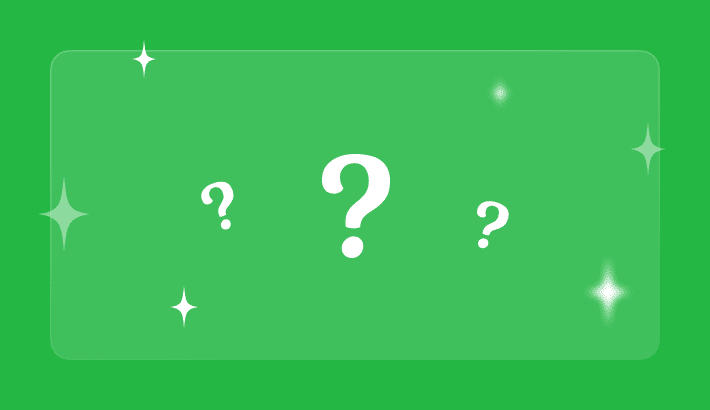


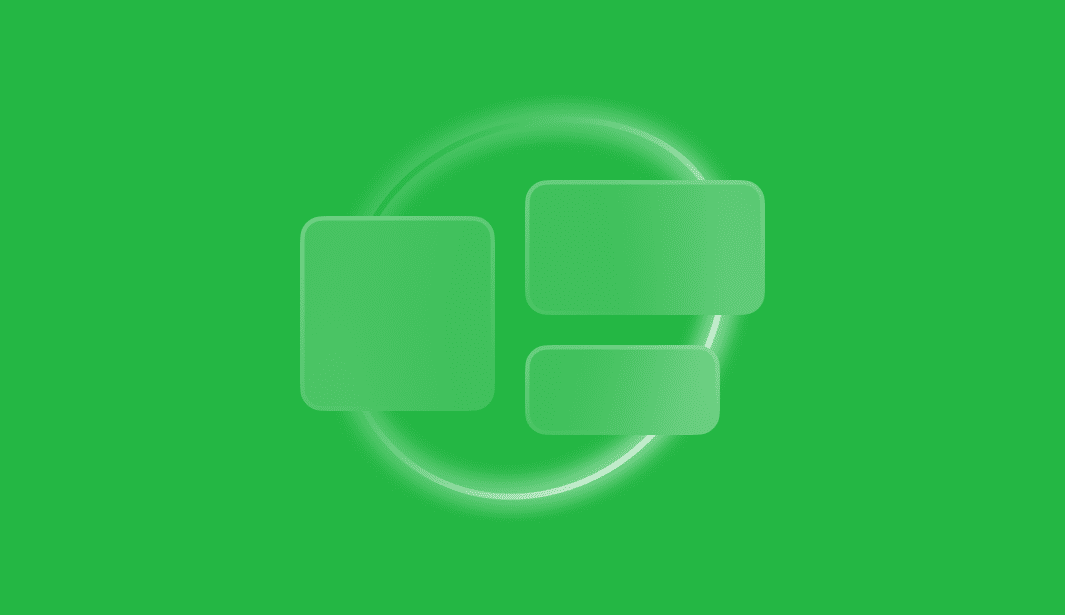


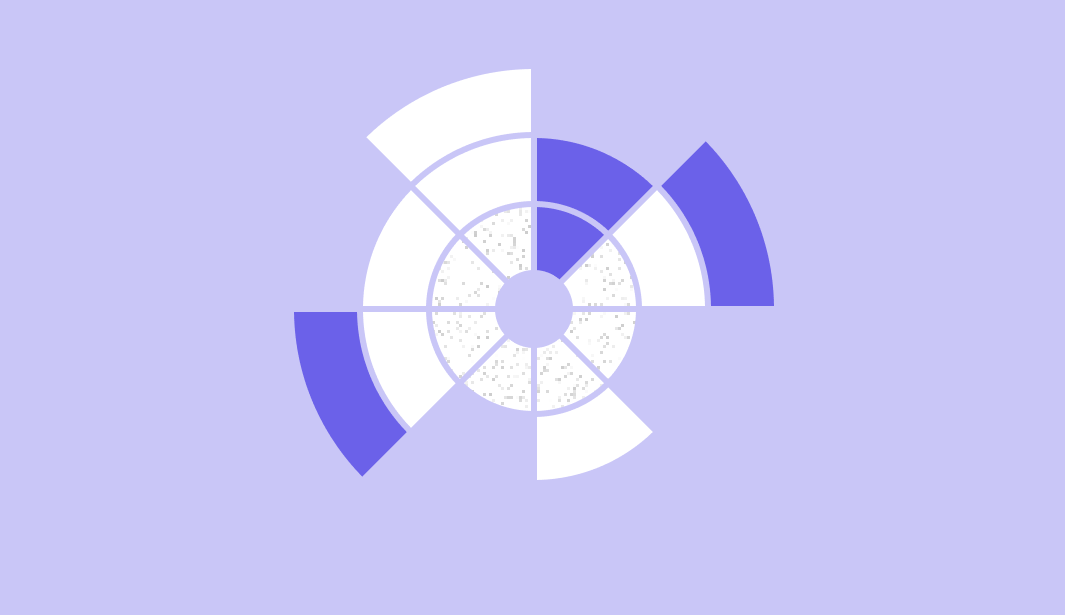
0 comments